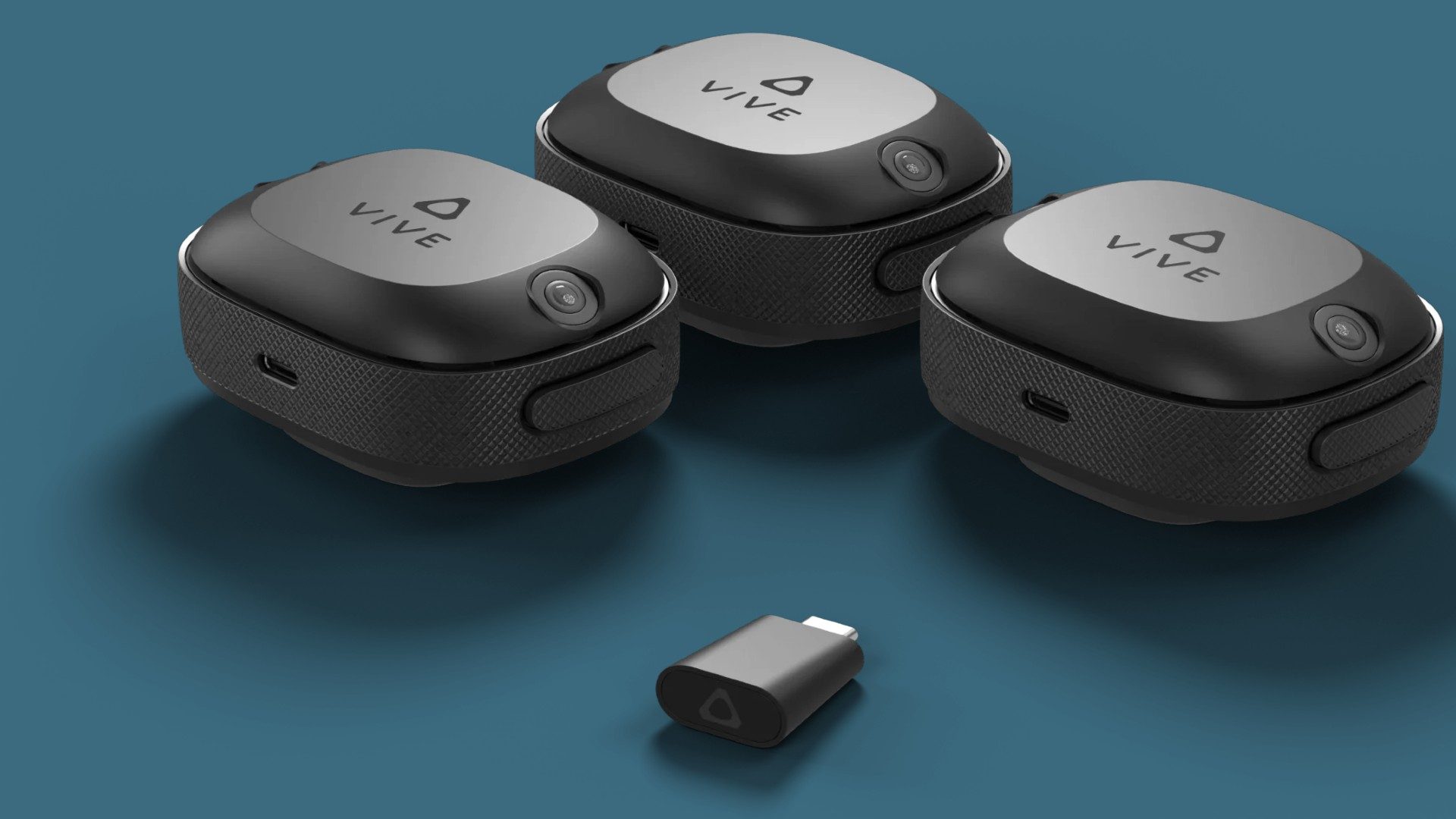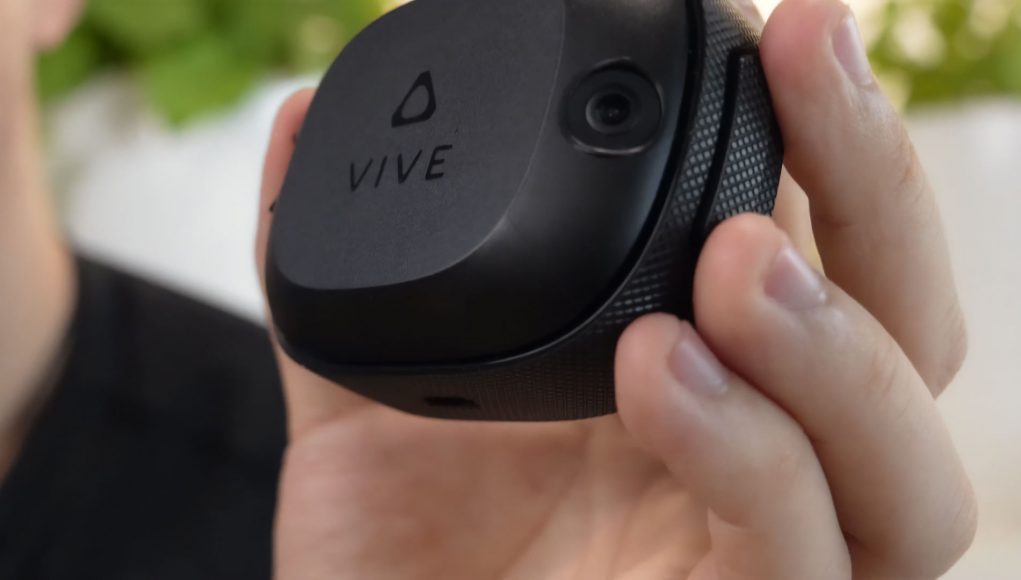First revealed at GDC 2023 earlier this year, HTC has now launched its long-awaited inside-out tracking accessory, which is now dubbed the Vive Ultimate Tracker.
Unlike previous Vive Trackers, Vive Ultimate Tracker makes use of inside-out optical tracking instead of SteamVR base stations, making it useful for users of HTC standalones Vive XR Elite and Vive Focus 3. The company says support is also eventually coming to OpenXR/SteamVR based PC VR setups in the near future.
Vive Ultimate Tracker does this by imbedding two wide-FOV cameras to track its own location in 3D space. It also allows users to link up to five trackers per headset for multi-point full-body tracking by attaching two trackers to the elbows, two to the feet, and one to the user’s hips.

Vive Ultimate Tracker also uses a standard 1/4″-20 UNC mount and has a pogo pin interface, allowing it to attach to a variety of objects, the company says, adding that it’s also slated to release developer documentation and the 3D CAD file publicly so that people can design their own bespoke mounts.
Post-launch, HTC says Vive Ultimate Tracker will work entirely independently with SteamVR, without any headset present, so it can be used to track the movement of people or objects, making it useful for industrial things like equipment and prop-tracking. That’s slated to arrive as a beta in the coming weeks.
HTC’s latest standalone, Vive XR Elite, will also see the launch of a native VRChat app in December which supports Vive Ultimate Tracker.
Priced at $200, users looking for basic full-body tracking don’t need to spend the full $1,000 though for five trackers however, as HTC is also pitching a three-tracker bundle for $600, which includes the required Vive Wireless Dongle ($39 MSRP). With that setup, you’d attach a tracker to each foot (with supplied straps) and one to your hips.
HTC is offering a few bundles as special deals from now until December 31st. Owners of Vive XR Elite who purchase the $600 Ultimate Tracker 3+1 Kit + TrackStraps Special can get a $100 discount after registering a valid Vive XR Elite serial number, bringing the price to $500. This also includes a Dance Dash download key.
HTC is also bundling Vive XR Elite and Vive Ultimate Tracker for $1,500, which includes VIVE XR Elite headset ($1,000 MSRP), 3 Vive Ultimate Trackers, 1 Wireless Dongle, a Dance Dash download key, and TrackStraps. You can find the deals over at vive.com.
Check out the specs below:
- In-box items – VIVE Ultimate Tracker, 1/4″-20 UNC screw-in mount (use is optional), 120 cm USB-C to USB-C cable, Documentation (user guide QR code / safety guide / warranty card)
- Tracking – 6DoF inside-out tracking – Wide-FOV tracking cameras x 2
- Dimensions – 77 x 58.6 x 27.3 mm
- Weight – 94 g
- Battery life – Up to 7 hours
- Charging time – 2.2 hours on average with Qualcomm Quick Charge 3.0, 3.2 hours on average with 5V/1A power supply
- Charging mechanism – USB Type-C, Pogo pins
- Inputs – Pogo pins x 6, USB Type-C port
- Connectivity – Proprietary 2.4 GHz, 5 GHz Wi-Fi
- Compatible devices – Requires VIVE Wireless Dongle to connect to: VIVE XR Elite, VIVE Focus 3 (LBE). Support for other standalone and PC VR headsets is planned







